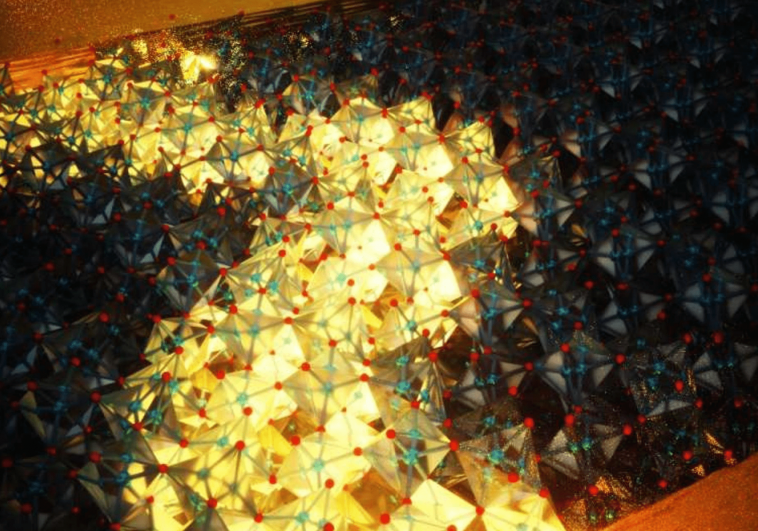Above: A material known as vanadium dioxide has been found to have a form of “memory” for stimuli encountered in the past.
This is the first time this ability has been found in material, but it may not be the last. This discovery has very intriguing implications for the development of electronic devices, especially data processing and storage.
A research team led by electrical engineer Mohammad Samizadeh Nikoo of the Swiss Federal Institute of Technology in Lausanne wrote in their paper: “Here, we report that the electrons in vanadium dioxide can obtain long-lived structural states, which could provide a solution for data storage and processing.”
These glass-like functional devices may surpass conventional metal-oxide-semiconductor electronics in speed, energy consumption, and miniaturization, and offer a pathway to neuromorphic computing and multilevel memory.
Vanadium dioxide (VO2) is a recently surfaced material that could replace or complement silicon as the basis for electronic devices, as it has the potential to surpass the latter as a material for new types of semiconductors.
One of the most interesting properties of VO2 is that below 68 degrees Celsius (154.4 degrees Fahrenheit) it behaves as an insulator – but above this critical temperature it suddenly transforms into a metal that conducts well, a change known as “metallic” – Insulator transition”.
Only recently, in 2018, did scientists discover why: As the temperature increased, the arrangement of atoms in the lattice pattern changed.
When the temperature drops, the material returns to its original insulator state. Mohammad Samizadeh Niku originally intended to study how long it would take for VO2 to transition from an insulator to a metal and vice versa, and he measured when the switch was triggered.
It’s these measurements that reveal something very strange. Although, it went back to the same starting state, but VO2 behaved as if it remembered the most recent activity.
The experiment involves introducing an electrical current into the material so that it follows a precise path from one end to the other. This current heats VO2, causing it to change state (the aforementioned rearrangement of atomic structure). When the current is removed, the atomic structure relaxes again.
Things get interesting when the current is reinjected.
Elison Matioli, an electrical engineer at EPFL, explained: “VO2 seems to ‘remember’ the first phase transition and predict the next phase transition. We didn’t expect to see this memory effect, which is not related to the electronic state, but to the physical structure of the material. This is a new discovery: no other material has this property.”
The team’s work revealed that VO2 stored some kind of information for at least 3 hours on the most recent applied current. In fact, it could be much longer. “But we don’t currently have the instruments to measure it,” says Ellison Mattioli.
This transition is reminiscent of the behavior of neurons in the brain, which are both storage units and processors. Known as neuromorphic technology, computing based on similar systems could have real advantages over traditional chips and circuit boards.
Since this dual nature of the material is innate, VO2 seems to meet all the requirements of a memory device: the potential for high capacity, high speed and scalability. Furthermore, its properties give it an advantage over storage devices that encode data in a binary format controlled by an electronic state.
“We have reported glass-like dynamics in VO2 that can be excited on sub-nanosecond timescales and monitored over several orders of magnitude, from microseconds to hours,” the researchers wrote. Our functional devices address the continuing need for electronics to downsize, operate faster and reduce voltage supply levels.”
The research was published in the journal Nature Electronics.




GIPHY App Key not set. Please check settings